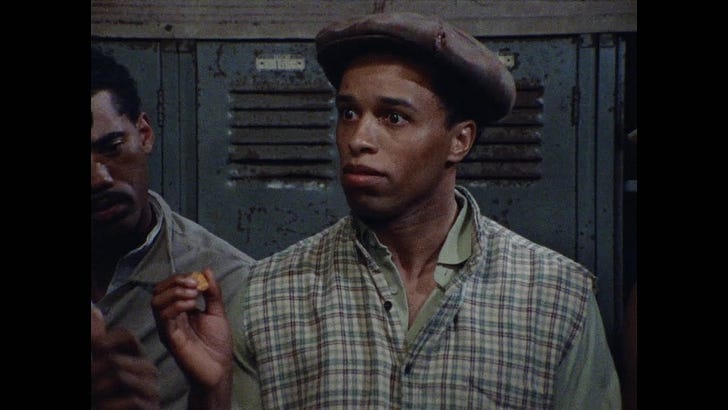"The union, that's all we got in this hellhole"
The last scene of The Killing Floor (1984) shares lessons on organizing for the long haul
There are few labor films that move me as much as The Killing Floor (1984). Based on a true story, the film tells the story of Frank Custer, a Black man who migrates from the South to Chicago to take advantage of the labor shortage caused by the First World War. He’s hired at a meatpacking plant when he develops an interest in the albeit white-dominated union. Custer in turn garners the attention of the unionists because they see him as a conduit to the Black workers, who are suspicious of the union. The Killing Floor documents Custer navigating the tension between his two communities: the union and the Black workers. Custer struggles to bridge these two groups whose interests, he believes, overlap but whose actions throughout the story preclude their unity. In the end Custer fails to build an interracial union, but in this tragedy he remains optimistic about the impact he’s made.
For activists today, the last scene reveals lessons on organizing for the long haul. Against the backdrop of the Chicago race riot of 1919, the Black packinghouse workers re-enter the workplace against the wishes of the white-dominated union. Among the "scabs" is Custer himself, who, after slamming his locker door shut to quiet the locker room, declares passionately that the company is no friend of theirs. Far from doing them a favor, the company was “herding us into these packinghouses like a bunch of cattle.” Before returning to the killing floor, Custer offers his Black co-workers a choice: be treated like cattle—scared and with the life squeezed out of them—or unionize. Despite the interracial strife they've just gone through, Black workers need the union, and the union needs them, Custer proclaims. “But you know what we need? Each other. And them men and women [white unionists] that just walked away from the yards? We need them, too. And they need us.” Of course this last attempt of Custer’s to bridge his two communities is received poorly, but his convictions drive him to make it anyway.
In the final minutes of the film, we appreciate how organizing is very much like a collaboration between the present and the future. Although his call to organize is ignored, a sign of hope flickers when, after the locker room has emptied, a young Black worker approaches Custer with his hand extended. After shaking hands, Custer stands alone, smiling, placing his union pin on the inside collar of his shirt. He remains committed to the idea of interracial unionism but understands that the moment for it has yet to ripen. Custer believes, however, that his years of organizing have not gone in vain, for they have laid the groundwork for the unionization of the meatpacking industry, which indeed would be realized in the 1940s by the CIO's United Packinghouse Workers of America (UPWA). Custer, a former sharecropper from Mississippi, leaves us with this hard truth about organizing:
It's nice to see healthy stalks of corn growing tall in the field, or some tomatoes growing red and juicy on the vine. But somebody's got to get out there in that boiling sun and plant them seeds before they can grow. You can hold a little seed in your hand until doomsday. But nothing's gonna happen til you put it into the ground.
The Killing Floor teaches us neither to wait to make a change, nor to expect shortcuts and easy victories. Be strategic in what you can accomplish now so that the future can build on your efforts.



